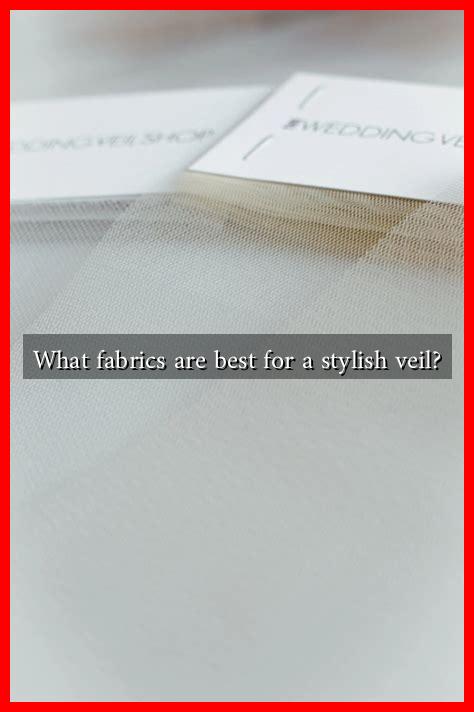-
Table of Contents
What Fabrics Are Best for a Stylish Veil?
Choosing the right fabric for a veil is crucial for achieving the desired aesthetic and functionality. Whether for a wedding, a fashion statement, or a cultural event, the fabric can significantly influence the overall look and feel of the veil. In this article, we will explore various fabrics that are ideal for creating stylish veils, considering factors such as texture, drape, and occasion.
Understanding Veil Fabrics
Veils come in various styles and lengths, and the fabric you choose can enhance or detract from the overall design. Here are some key factors to consider when selecting a fabric for a veil:
- Weight: Heavier fabrics may provide more structure, while lighter fabrics can create a soft, ethereal look.
- Transparency: The level of sheerness can affect how the veil interacts with the light and the overall visibility of the face.
- Texture: Different textures can add depth and interest to the veil, influencing how it complements the outfit.
Top Fabrics for Stylish Veils
Here are some of the best fabrics to consider when creating a stylish veil:
1. Tulle
Tulle is a classic choice for veils, known for its lightweight and airy quality. It is a net-like fabric that can be layered to create volume and depth.
- Pros: Tulle is versatile and can be easily manipulated into various styles. It is also available in a range of colors.
- Cons: It can be prone to snagging and may require careful handling.
2. Lace
Lace adds a touch of elegance and sophistication to any veil. It can be used as an overlay or as the primary fabric, offering intricate patterns and textures.
- Pros: Lace veils are timeless and can complement both traditional and modern bridal styles.
- Cons: Lace can be heavier than other fabrics, which may affect the drape.
3. Chiffon
Chiffon is a lightweight, sheer fabric that drapes beautifully, making it an excellent choice for flowing veils.
- Pros: Chiffon has a soft, romantic feel and is less prone to wrinkling than other fabrics.
- Cons: It may require additional layers for opacity, depending on the desired look.
4. Organza
Organza is a crisp, sheer fabric that holds its shape well, making it ideal for structured veils.
- Pros: Organza adds volume and can create dramatic effects with its stiffness.
- Cons: It can be less forgiving in terms of comfort, especially in warmer climates.
5. Silk
Silk is a luxurious fabric that exudes elegance and sophistication. It can be used for both traditional and contemporary veils.
- Pros: Silk has a beautiful sheen and drapes wonderfully, providing a high-end look.
- Cons: It is more expensive and requires careful maintenance to avoid damage.
Case Studies: Real-Life Examples
Many brides and fashion designers have successfully utilized these fabrics to create stunning veils. For instance, the renowned designer Vera Wang often incorporates tulle and lace in her bridal collections, showcasing how these fabrics can elevate a bridal look. Additionally, celebrity weddings, such as that of Kate Middleton, have highlighted the beauty of lace veils, inspiring countless brides worldwide.
Conclusion
Choosing the right fabric for a stylish veil is essential for achieving the desired look and feel. Tulle, lace, chiffon, organza, and silk each offer unique benefits and aesthetics, allowing for a range of styles to suit any occasion. When selecting a fabric, consider factors such as weight, transparency, and texture to ensure that your veil complements your overall outfit. With the right fabric, your veil can become a stunning focal point that enhances your style and leaves a lasting impression.
For more insights on bridal fashion and veil styles, you can visit Brides.com.


